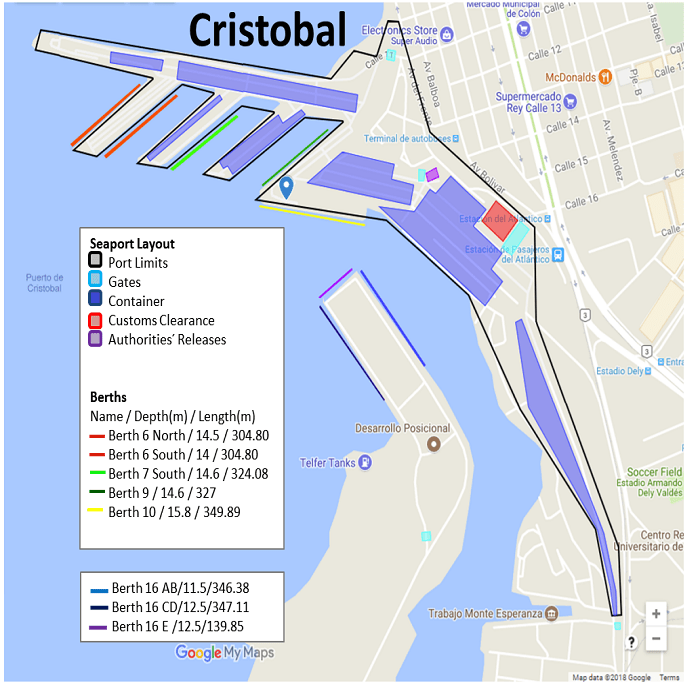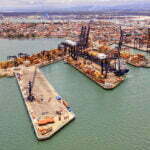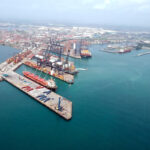Puerto Cristóbal
Vistazo General
El puerto de Cristóbal es el puerto más antiguo en operación del Atlántico. Operando comercialmente por más de 150 años, Cristóbal fue construido para recibir a los trabajadores y materiales durante la construcción del ferrocarril transístmico. Colón, originalmente llamado Aspinwall, fue la puerta de entrada en el Atlántico para los buques que transportaban pasajeros desde Nueva York impulsados por la fiebre de oro en California. Para aquella época, este puerto poseía pocos muelles construidos básicamente de hierro y madera, y estuvo en operaciones por 50 años antes de la inauguración del puerto de Balboa. |
Cristóbal está operado por HUTCHISON PORTS PPC quien está a cargo de su administración y junto con Balboa en el lado Pacífico desde el año 1997, luego de recibir una concesión otorgada por el Estado y extensible de 25 años bajo la Ley 5 del 16 de Enero de 1997.Seguir Leyendo…
Desde entonces, HUTCHISON PORTS PPC inició el proceso de transformación de los muelles y su adaptación a los nuevos patrones del comercio mundial.
Hutchison Ports es líder mundial en inversiones, desarrollo y operaciones portuarias del mundo, con una red de 52 puertos que abarca 27 países de Asia, Medio Oriente, África, Europa, América y Australasia.
Ubicación
El puerto de Cristóbal está localizado en la Bahía de Limón en la parte sureste de la ciudad de Colón y en la entrada Atlántica del Canal de Panamá. Su posición estratégica conecta a este puerto con las rutas marítimas más importantes del Caribe y el Océano Atlántico. Es uno de los aliados multimodales más importantes de la Zona Libre de Colón.
Seguir Leyendo…
Con una capacidad de manejo de más de 2 millones de TEUs, este puerto posee acceso terrestre a la Zona Libre de Colón y una interfaz única con el ferrocarril dentro de sus instalaciones que permite fácilmente el movimiento de los contenedores, con un total de 1,200 conexiones para unidades refrigeradas, 3 muelles para contenedores y 12 hectáreas dedicadas al manejo y almacenamiento de contenedores respectivamente, 13 grúas porticas y con más de 30 RTGs de patio para atender las operaciones de contenedores.
Cristóbal posee un gran potencial para consolidarse como un importante nodo en el Atlántico para contenedores, graneles sólidos, productos líquidos y carga general. Su accesibilidad al canal y a importantes rutas marítimas, los programas de expansión de infraestructuras y los planes de inversiones en equipo y recurso humano son los elementos claves que permitirán una mayor capacidad ante los grandes volúmenes de carga que se verán en un futuro cercano.
Descripción General
| Cristóbal posee un diseño original que permite a este puerto manejar una amplia variedad de cargas. Construido originalmente para carga general durante el pasado siglo, Cristóbal es actualmente un puerto de rápido crecimiento enfocado principalmente a la carga contenerizada. Sus cambios incluyen la reorganización de las áreas de atraque y almacenamiento, la adquisición de equipo especializado, y la construcción de nuevas facilidades para el almacenamiento de carga seca y general. |
Cristóbal posee la capacidad de recibir y manejar:
- Contenedores
- Graneles secos y líquidos
- Carga General
- Carga de proyectos especiales
Dispone de una casa de flete con un área cubierta de 5,440 m2 para la consolidación y desconsolidación de mercancía, así como para el manejo de otros tipos de cargas sensitivas. Todas las representaciones del Estado están disponibles en el puerto para cualquier inspección de carga, documentación, liquidación y salida.Seguir Leyendo…
Cristóbal está comprometido con mantener la integridad y seguridad de sus procesos en la organización, por lo que cumple con todos los aspectos del acuerdo CSI (Container Security Initiative) establecido entre Estados Unidos y Panamá, el programa BASC (Alianza Empresarial para el Comercio Seguro), PGCC (Programa Global para el Control de Contenedores) de la UNODC (Oficina de las Naciones Unidas contra la Droga y el Delito), C-TPAT (Asociación estratégica Aduana-Industria contra terrorismo) y el código PBIB (Código para la Protección de Buques e Instalaciones Portuarias), a fin de garantizar la seguridad a sus clientes.
Mostrar menos
Summary Table
Estadísticas
Cristóbal aumentó sus movimientos a 1.1 millones de TEUs en el 2024 con un 96.8% de trasbordo. En el 2023, movilizó 888,306 TEUs con un 95.7% de movimientos de trasbordo, mientras que en el 2022 movilizó 913,911 TEUs, donde el trasbordo representó el 96.4%.

Dirección
Panama Ports Company Edificio 1501 Avenida Arnulfo Arias Madrid Apartado Postal 0843-00574 Panamá, República de Panamá
Teléfono: (507) 207-5100
Fax: (507) 232-5583
Email :
Website:




